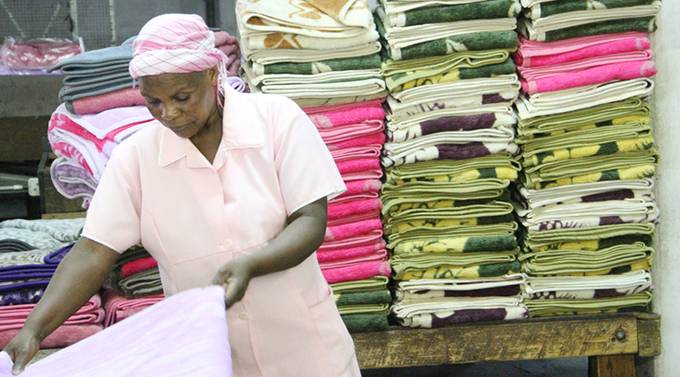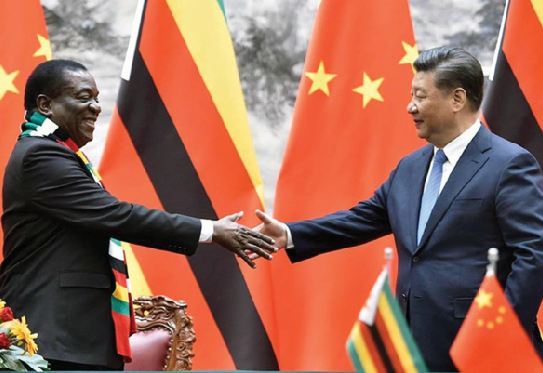Sino-Africa must focus on high-quality development
In the context of China’s economic recovery, China and Africa can strengthen co-operation in areas such as deep processing of agricultural products and mineral products, trade and investment in medical and healthcare field.
Since the 1980s, Africa has experienced a so-called “lost decade”, years of turbulence and a period of robust growth. In the recent past decade or so, Africa has been hit by the global financial crisis (2008), the Arab Spring (2011), the plunge in commodity prices (2014) and the Covid-19 pandemic (2020).
With the global economy undergoing profound changes, Africa has the opportunity to accelerate economic growth and political and social transformation.
Since March 2020, the Covid-19 outbreak has posed immense challenges to Africa and has battered its fragile economy. The pandemic has affected China-Africa economic and trade co-operation in the short term. In the future, high-quality development should be the primary goal for China-Africa cooperation.
New challenges
From 2014 till the outbreak of the pandemic, Africa was in a state of “subdued growth and elevated debt”.
According to statistics from the United Nations, the growth rate of Africa’s GDP fell to 3,6 percent in 2014, ending the more than 10-year phase of high growth of over 5 percent, and in 2016 it further plummeted to a 20-year low of 1,6 percent. In the following three years, the GDP growth rate recovered slightly due to the correction of international oil prices, but it always remained below 3 percent.
The decline in the growth rate of per-capita GDP is more pronounced, with an average annual growth rate of only 0,5 percent in the past decade, far lower than 2,7 percent in the preceding decade. Large economies in Africa such as Nigeria, South Africa and Angola have experienced slow growth and even recession.
In 2019, the total external debt of Sub-Saharan Africa reached nearly US$625 billion, doubling the level of 2011, with an average annual growth rate of 8 percent, and the average debt-to-GDP ratio rose from 22,7 percent to 37,8 percent.
According to the debt sustainability assessments issued by the International Monetary Fund (IMF) in September 2020, seven countries in Africa are currently facing debt crisis, and another 28 countries have medium and high risks of debt.
The pandemic has adversely affected the African economy in various ways. The pillar industries and real economy in many African countries have been badly hit. Sluggish global demand has hurt African exports. External funds such as remittances, aid funds, and direct investment have decreased significantly, while public expenditures such as health spending have increased. Growing fiscal imbalances have further weakened African countries’ debt solvency.
Measures such as lockdowns and curfews to prevent the spread of the virus have caused economic shock and social chaos in some countries. Inflation, unemployment, and even shortages of food have begun to appear, and public security problems have become more common and frequent.
The pandemic has drastically lowered Africa’s economic growth expectations. In October 2020, the World Bank predicted that the economy of Sub-Saharan Africa will shrink by 3,3 percent in 2020. At the same time, the IMF forecast that the economy of Sub-Saharan Africa will shrink by 3 percent in 2020, and it will take at least two to four years to return to its pre-pandemic level.
In the forecast models of various institutions, the growth rate of Africa’s GDP is lower than the growth rate of the population, and the decline in per-capita income will not only drag down economic growth, but also seriously affect the people’s livelihood.
Finding the right way
The subdued growth and elevated debt level of the African economy and its economic fragility, in the final analysis, reflect the difficulties of its economic structural transformation. Even though the African economy achieved rapid growth between 1995 and 2014, there has been no significant change in the industrial structure.
In the agricultural sector, the development over the past few decades mainly stems from an increase in farmland rather than productivity. This kind of extensive agriculture has increased the total output, but has inhibited technological progress. As a result, there is little increase in output per unit, and the net surplus of agriculture is extremely low.
In the industrial sector, the manufacturing industry is shrinking, accounting for only 11 percent to 12 percent of the GDP. In many African countries, the service industry has become the main contributor to the GDP, but this is not a result of the structural transformation of an economy that has developed into a service-oriented economy on the basis of mature industrialisation. It is, to a greater extent, a manifestation of the stagnant development of the manufacturing sector.
As a continent, Africa has always been on the edge of the global industrial chain. Most countries still export raw materials or minimally processed products. Economic growth has always been severely constrained by the dependence on external markets and funds from overseas.
On the positive side, though, there are two driving forces of development in Africa. One is the expanding middle class in Africa and the rise in its purchasing power, and the other is the expanding market, especially the rise of start-ups, venture investment and development of free trade zones on the continent.
For most African countries, finding an economic development path that suits their national conditions is still the goal. The problem facing the governments is how to allocate limited resources to make up a deficiency in economic growth. This requires governments to increase their administrative capacity, especially the ability to mobilise local resources, so as to gradually increase the savings rate and the proportion of tax revenue in fiscal revenue, improve infrastructure, business environment and human resource management, and at the same time, strengthen the ability to absorb and utilise external economic resources.
High-quality development
Affected by factors such as the economic downturn brought about by the pandemic and the obstacles to the movement of labour, capital and materials, China-African economic and trade co-operation will face difficulties in the short run.
The annual project completion value may continue to decline and the bilateral trade volume may decrease significantly. The progress of investment projects in Africa is also slowing down, with some existing projects already suspended. However, China-Africa co-operation has not been weakened due to the pandemic, but has been enhanced.
As both China and Africa enter a new stage of development, the two sides need to explore better approaches to their co-operation based on the new international and domestic environment and in accordance with the principle of win-win co-operation.
The author is general manager of the Research and Development Department at China-Africa Development Fund.-herald.l.zw











